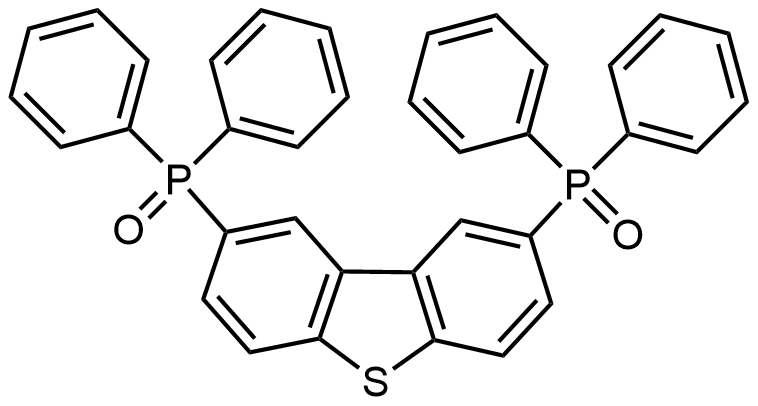The content on our website is provided solely for general informational purposes. It should not be considered, nor is it intended to provide advice or recommendations for the purchase, sale, or trade of any products or services. Importantly, the information presented does not constitute an offer to sell or a solicitation of an offer to buy any product.
Please be aware that the availability of our products may vary across different markets due to regulatory restrictions or other considerations. Consequently, not all products or services may be available in your region or country. For specific inquiries regarding the availability and pricing of any product, please contact us at sales@noctiluca.eu.
General information
- Name: PPT
- Full name: 2,8-Bis(diphenyl-phosphoryl)-dibenzo[b,d]thiophene
- CAS number: 1019842-99-9
- Chemical formula: C36H26O2P2S
- Molecular weight: 584.60 g/mol
- Absorption: λmax = 312 nm, 328 nm in DCM
- Photoluminescence: λmax = 350 nm in DCM
- HOMO/LUMO: HOMO = 6.7 eV, LUMO = 3.0 eV
- Synonyms: DPDT, PO15
- Classification: Organic light-emitting diodes, Electron transport layer materials (ETL), Host materials, TADF materials, Organic long persistent luminescence
- Purity: Sublimed: >99.0% (HPLC)
- Melting point: TGA: >320 °C
- Appearance: Yellow powder/crystals
